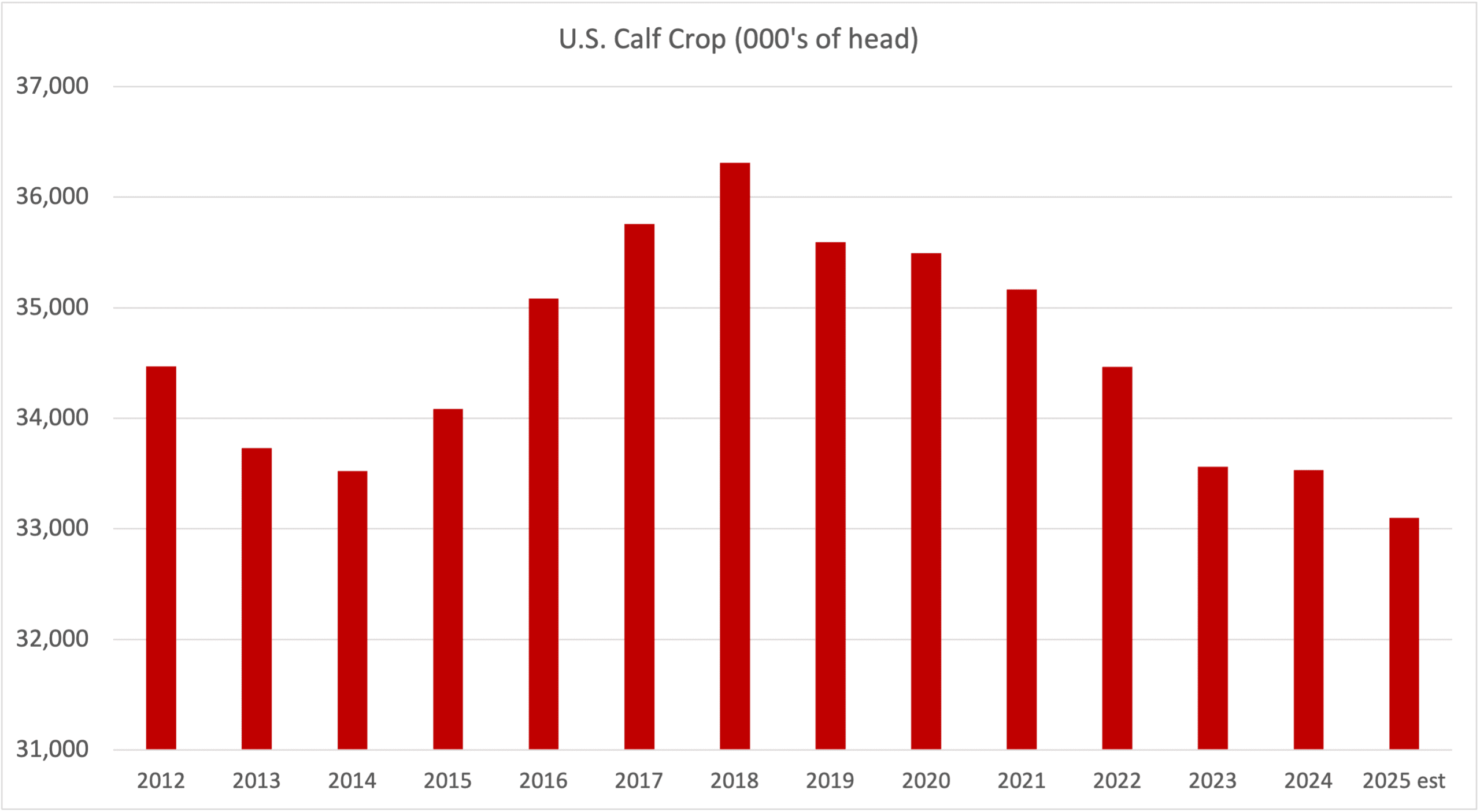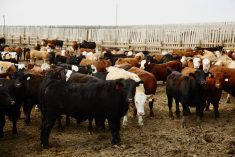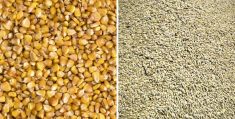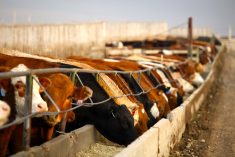The Canadian dollar has been trending lower since making a seasonal high of just over 80 cents U.S. in early April 2022. At the time of writing this article, the Canadian dollar was nearing two-year lows of around 75 cents U.S. Canadian fed and feeder cattle exports are running sharply above year-ago levels and export demand has been enhanced with the weaker currency. Cattle producers have a currency position when holding a commodity priced in the U.S. dollar on the world market.
I’ve received many calls from feedlot operators and cow-calf producers over the past month inquiring about the longer-term outlook for the Canadian-U.S. exchange rate. The fundamental structure of the Canadian dollar has changed over the past month. Currencies are very hard to forecast but it’s important to have a good understanding of some of the major factors driving the exchange rate.
The Bank of Canada and the U.S. Federal Reserve have been increasing their key lending rates since February to curb or lower inflationary pressures. Throughout 2021, the central banks believed that inflation was transitory as the economies recovered from COVID-19 pandemic. This thought process ended in the spring of 2022 as wages and energy prices continued to climb. Supply chain issues and the computer chip shortage were also major contributors to inflation as consumer demand remained at higher levels. The Bank of Canada’s key lending rate was 0.25 per cent at the start of 2022 and the first rate hike on March 2 of 25 basis points changed the course of action. As of September 7, 2022, the Bank of Canada’s key rate was 3.25 per cent. The U.S. Federal Reserve made its first increase on March 17. At the time of writing this article, the U.S. bank rate was 2.5 per cent and a 75-basis-point hike was expected on September 22, which would bring the U.S. rate equal to the Canadian counterpart.
Read Also

Factors influencing cattle feeder market during the fall of 2025
Market analyst Jerry Klassen weighs in on live cattle markets
The Bank of Canada has kept its key lending rate 25 basis points to the U.S. Federal Reserve throughout the spring and summer. This will change for two main reasons. It appears that rate hikes from the Bank of Canada will top out lower and sooner compared to rate hikes from the U.S. Federal Reserve. By June of 2023, the key lending rate from the U.S. Federal Reserve will likely be in the range of 4.5 per cent to five per cent while the Canadian bank rate will be 4.25 per cent to 4.5 per cent.
[RELATED] Global Markets: Canada adds 21,000 jobs in September
The Statistics Canada labour surveys showed that employers shed jobs in June, July and August. South of the border, the U.S. experienced significant job growth through the summer months. Job vacancies remain high in the U.S. and the labour market remains tight. Extrapolating current data suggests that job growth in the U.S. will continue for the remainder of the year. The U.S. consumer price index came in at 8.3 per cent for August. Excluding food and energy, the core price index increased by 6.3 per cent. On a monthly basis, core inflation increased, which suggests that wages are now the main factor driving inflationary pressures, not energy or supply-chain backlogs. Job growth and aggregate household income are highly correlated. Canadian household income will decline, while U.S. income levels will continue to grow.
Another difference between Canada and the U.S. is the housing market. Rising interest rates are slowing the real estate and construction sectors. House prices in Canada are moving through a serious correction from the February highs. U.S. prices are softening in key markets but the average U.S. house price has held value over the past eight months. Some analysts are looking for average U.S. house prices to increase by one per cent over the next year. The U.S. housing market appears to be more stable compared to Canada. These two factors will cause the U.S. Federal Reserve to be more aggressive compared to the Bank of Canada.
During the COVID-19 pandemic, the central banks implemented a policy of quantitative easing which involves buying bonds. Buying bonds drives up bond prices and lower yields. Bank loans are based on bond yields so this was a very stimulative policy. Banks are now in the process of quantitative tightening. More importantly, the quantitative tightening from the U.S. Federal Reserve is more aggressive compared to the Bank of Canada. Throughout the summer, Canadian short-term bond yields were premium to the U.S. This changed in early September. U.S. short-term yields are now premium to Canadian yields.

Canadian fiscal policy is negative, especially in a rising interest-rate environment. The Liberal deficit is now expected to come in at $52.8 billion for the 2022-23 fiscal year. This is down from the deficit of $113.8 billion in 2021-22 and the whopping $327.7 billion deficit in 2020-21. Deficits are future taxes. The bond yield curve is inverted. Global investors have no confidence in the Canadian economy or Canadian federal leadership. Current Canadian federal fiscal policy is inflationary by nature.
Finally, resource demand is softening. Metals such as copper are back down to pre-COVID-19 levels. The resource-based currency is struggling due to weaker global growth prospects. China is in a real estate meltdown with ongoing COVID-19 lockdowns. Consumer demand in China has dropped off the shelf. Europe is heading for a major recession and civil unrest over the winter.
In conclusion, the Canadian dollar tends to trade sideways or weaken during the fall period. U.S. bond yields are now premium to Canadian yields. This is negative for the Canadian dollar. The current economic environment suggests we’ll see a deteriorating Canadian dollar moving forward. This will support cattle prices throughout the fall and winter.
















